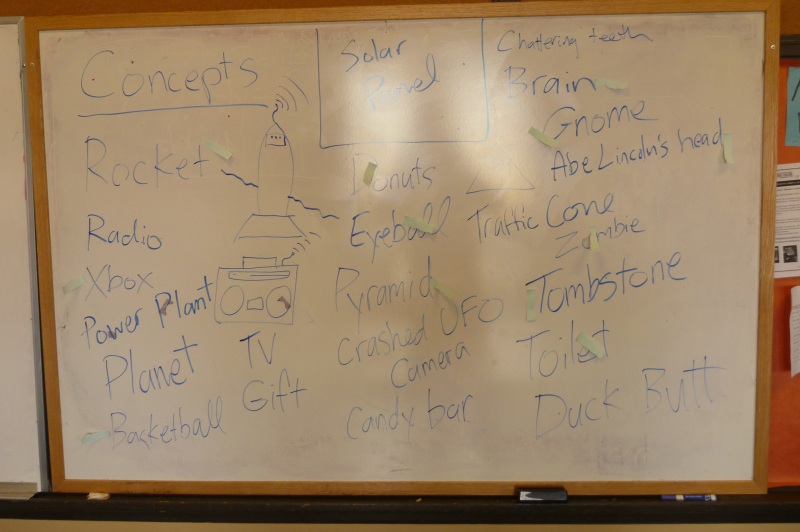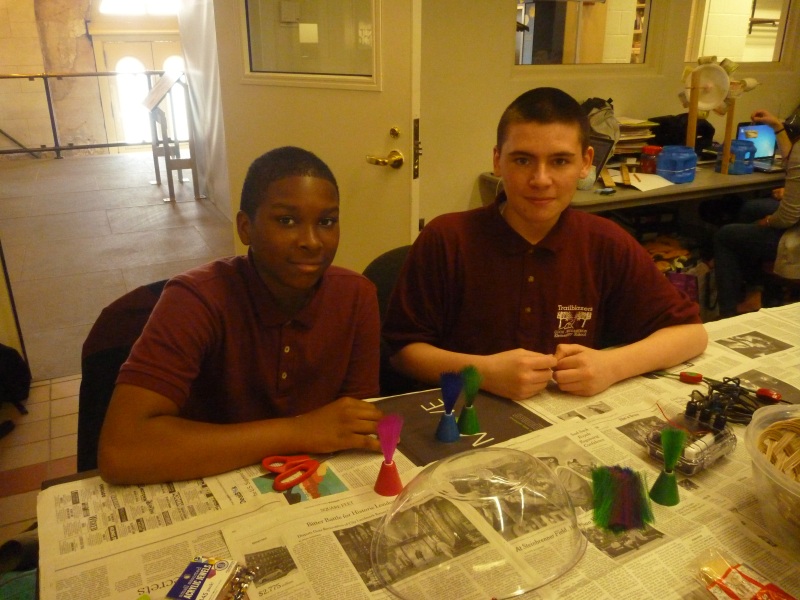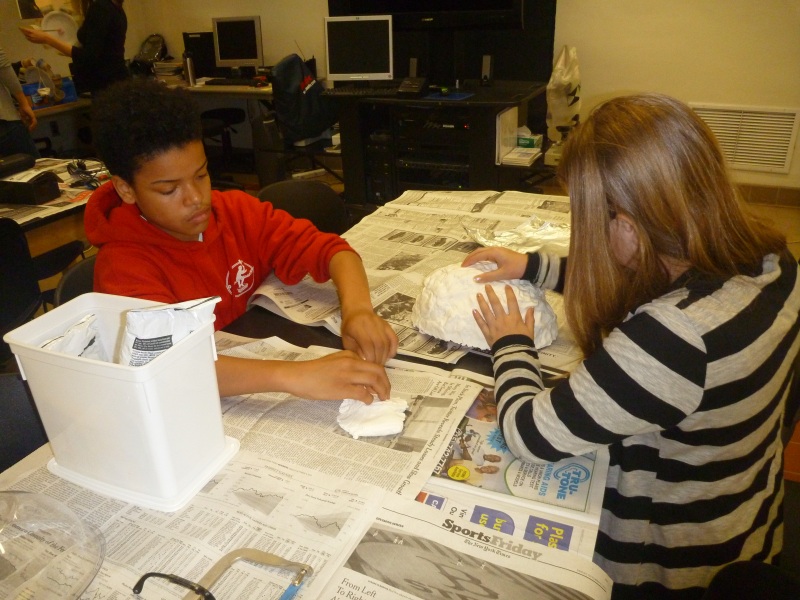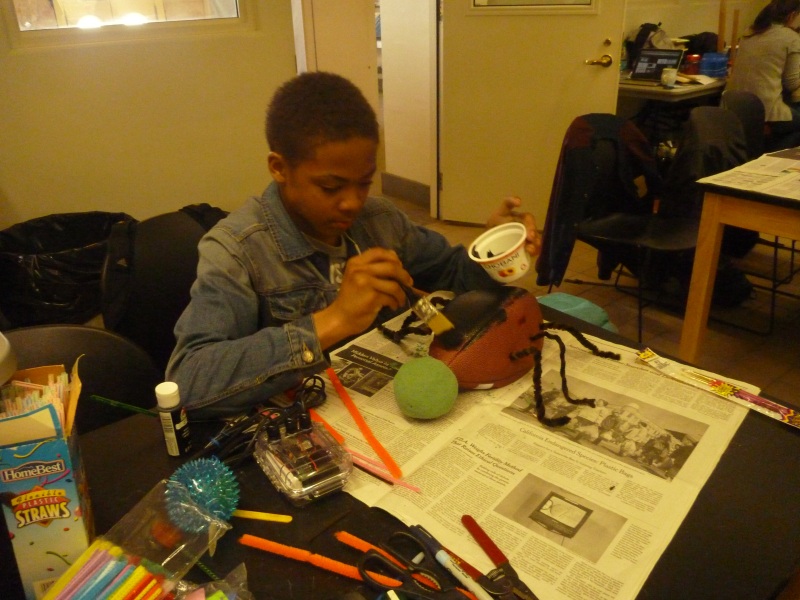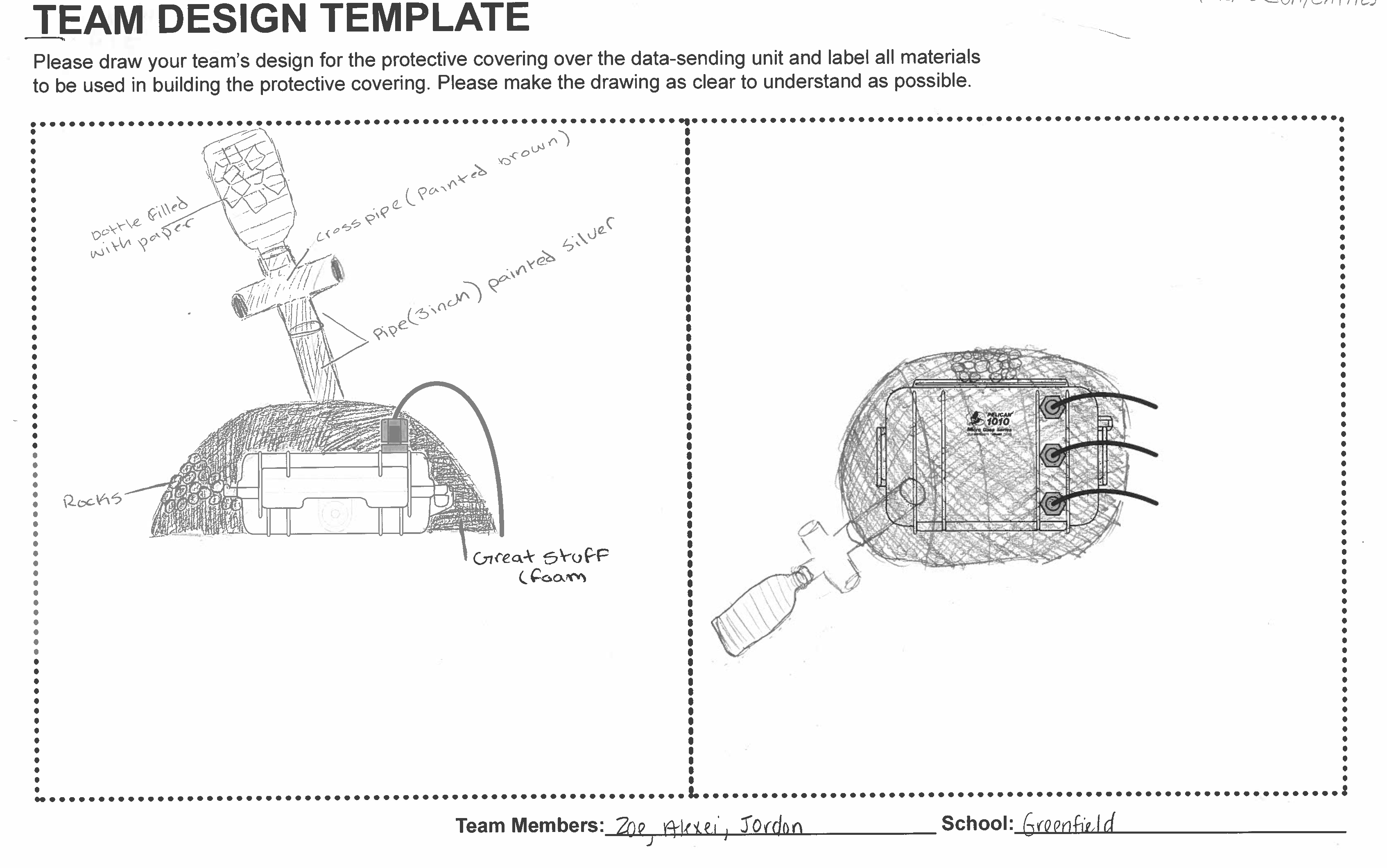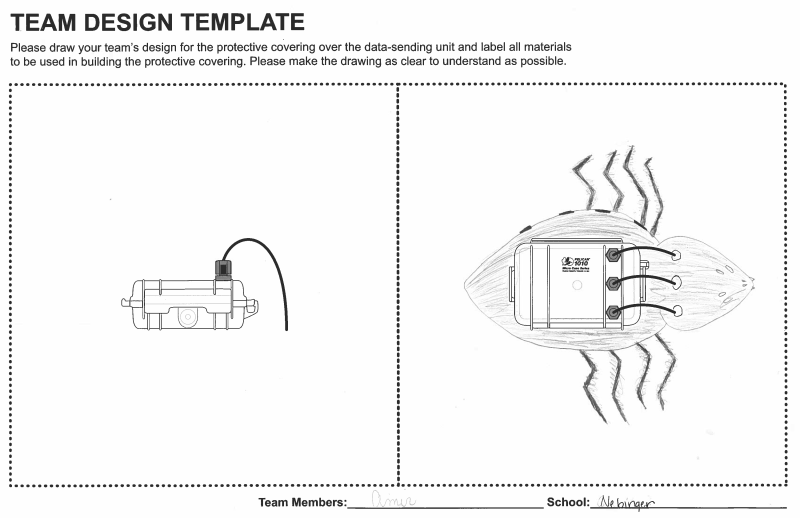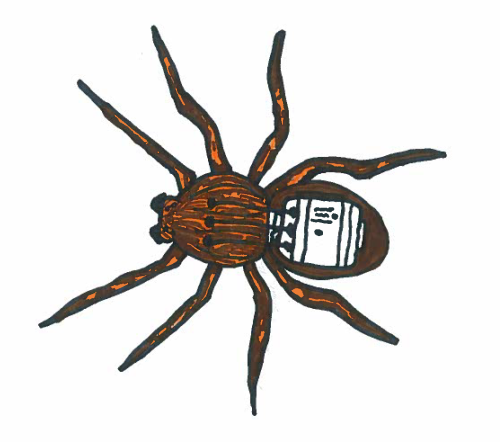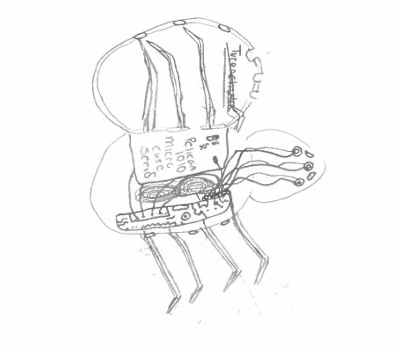Design Day at SLA
Yeah, that does say “duck butt” on the whiteboard. It’s a long story. At Science Leadership Academy’s Beeber campus, a 9th grade class is becoming a company. Its product is the Root Kit, and over the next 8 weeks the students will be responsible for building the kits, soldering the circuit boards, designing the housing, building the housing, installing the sensors, troubleshooting the kit, and creating a do-it-yourself construction manual for other schools. Is that too much to ask?
Yesterday, the SLA Beeber students did some rapid idea generation (I can’t stand the word “brainstorming”) to come up with concepts for the Root Kit housing. Factors to consider: This will be out in a garden, so it has to stand up to the elements; it doesn’t have to be waterproof, but it can’t be made of cardboard and paper, either. Using recycled materials whenever possible is good. And it can’t be made of metal—the radio signal from the Root Kit doesn’t carry well when the antenna is enclosed in metal.
Look back at the top picture and you can see that, based on the distribution of Post-It notes on the whiteboard (a Post-It indicates a student liked an idea), there was little consensus. None at all, in fact. Not even a hint of it. At the end of the day, we narrowed it down to two designs (an eye and a crashed rocketship) based on … I’m not sure, exactly. Buildability was one factor; the garden gnome was a great idea, for example, but we lack the sculpting skills to make it happen at the moment. Also, SLA Beeber’s mascot is a rocket, so that design seemed apt. It’s buildable, too, perhaps using two recycled 2-liter soda bottles.

